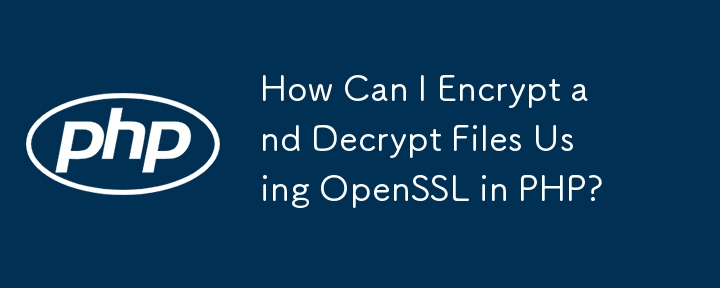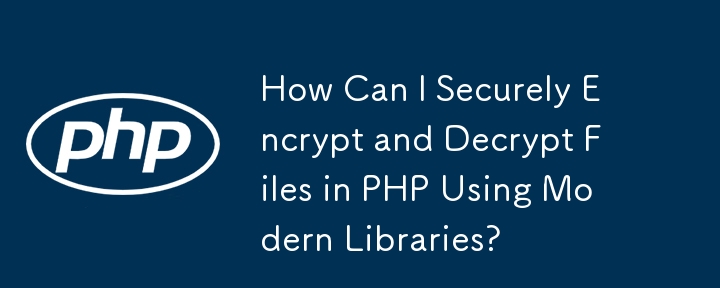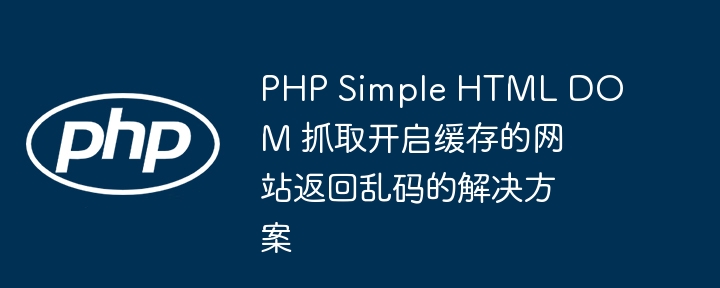Found a total of 10000 related content

Simplify data encryption in PHP using the JustEncrypt library
Article Introduction:When developing a PHP project that requires high-security data transfer, I encountered a challenge: how to maintain consistency of encryption algorithms between different PHP versions while ensuring performance and security. After some exploration, I discovered the JustEncrypt library, an encryption solution designed specifically for PHP that not only solved my problem, but also provided great convenience.
2025-04-18
comment 0
1202

Using Halite for Privacy and Two-Way Encryption of Emails
Article Introduction:This article explores Halite, a PHP library simplifying secure, two-way encryption leveraging the Libsodium library for enhanced email privacy. It emphasizes best practices in cryptography, highlighting the dangers of self-implementing encryption an
2025-02-15
comment 0
786

How to solve the encryption requirements in PHP projects? Use paragonie/halite!
Article Introduction:When developing a PHP project that requires high security encryption, I encountered a difficult problem: how to simplify the complexity of encryption operations while ensuring security. After trying many methods, I found that the paragonie/halite library not only solved my problem, but also greatly improved the security and development efficiency of the project.
2025-04-17
comment 0
1212
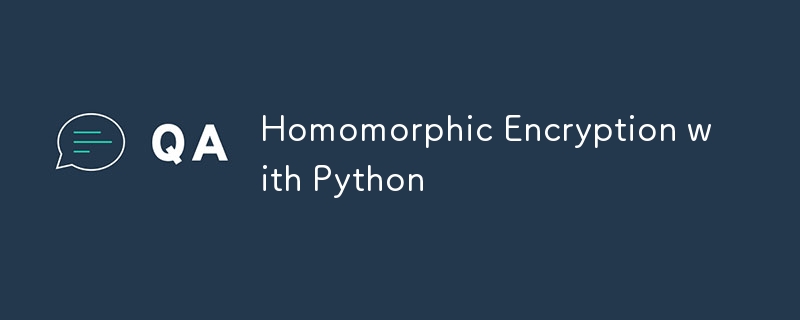
Homomorphic Encryption with Python
Article Introduction:Homomorphic encryption can be directly calculated on encrypted data, suitable for privacy scenarios. 1. It allows addition or multiplication of encrypted values, and the decryption results are consistent with plaintext operations; 2. Python implementation recommends using PySEAL or sealpy, which is based on Microsoft SEAL library; 3. Example steps include initializing parameters, generating keys, creating encryption and decryption machines, encoding encrypted values, performing addition and decryption results; 4. Notes include high performance overhead, missing accuracy of CKKS schemes, requiring proper management of keys, and reading documents and community activity when selecting libraries.
2025-07-18
comment 0
918
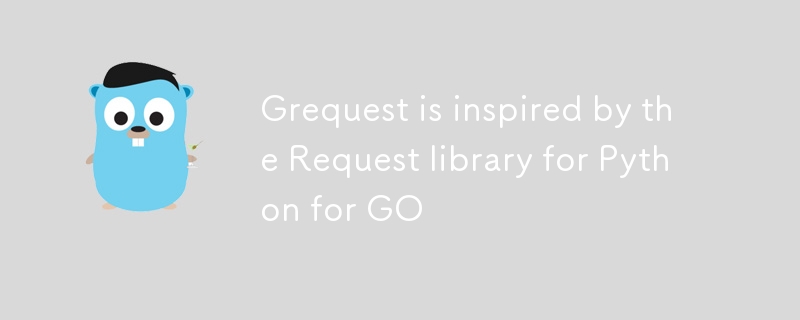
Grequest is inspired by the Request library for Python for GO
Article Introduction:Simple and lightweight golang package for http requests. based on powerful net/http
Grequest is inspired by the Request library for Python and Guzzle in PHP, the goal is to make a simple and convenient library for making http requests in go
The lib
2025-01-07
comment 0
810

Fighting Recruiter Spam with PHP - Proof of Concept
Article Introduction:This article details building a custom PHP email processor to manage recruiter spam. It leverages the Fetch library for IMAP interaction and SwiftMailer for automated replies. A scoring system based on keywords and sender information identifies spa
2025-02-10
comment 0
551
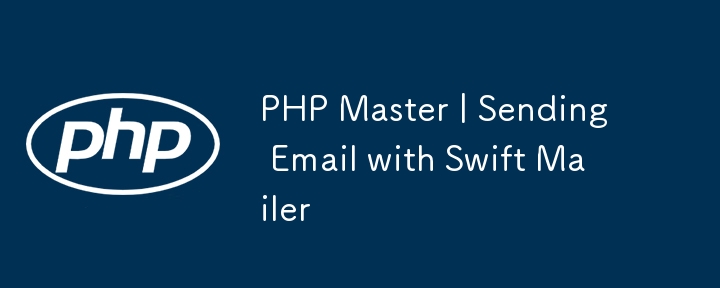
PHP Master | Sending Email with Swift Mailer
Article Introduction:Key Takeaways
Swift Mailer is a powerful, component-based library that allows programmers to send emails easily using an object-oriented approach, with minimal requirements of PHP 5.2 or higher with the SPL extension and a minimum memory limit of
2025-02-25
comment 0
685

Suggesting Carbon with Composer - Date and Time the Right Way
Article Introduction:Carbon: PHP date and time processing tool
Carbon is a lightweight PHP library for simplifying the processing of dates and times. It is based on and extends the core DateTime class and adds many convenient methods to make date-time operation easier. This article will introduce the basic usage of Carbon and demonstrate how to use it in a real project.
Core points:
Carbon is a library designed for PHP date and time operations, extends the core DateTime class and adds user-friendly methods to provide a more intuitive experience.
The library can be installed using Composer and can be instantiated from strings, timestamps, or other DateTime or Carbon instances
2025-02-16
comment 0
540

PHP vs. Python: Core Features and Functionality
Article Introduction:PHP and Python each have their own advantages and are suitable for different scenarios. 1.PHP is suitable for web development and provides built-in web servers and rich function libraries. 2. Python is suitable for data science and machine learning, with concise syntax and a powerful standard library. When choosing, it should be decided based on project requirements.
2025-04-13
comment 0
1155
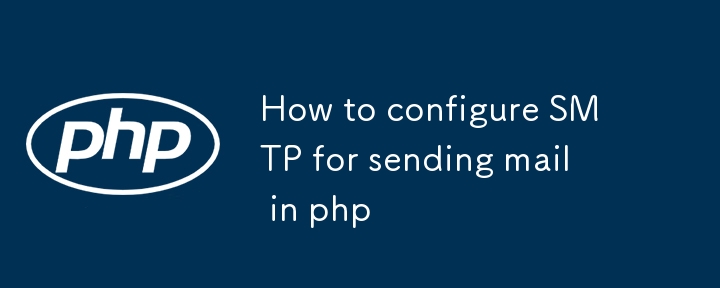
How to configure SMTP for sending mail in php
Article Introduction:Answer: Using the PHPMailer library to configure the SMTP server can enable sending mails through SMTP in PHP applications. PHPMailer needs to be installed, set up SMTP host, port, encryption method and authentication credentials of Gmail, write code to set sender, recipient, topic and content, enable 2FA and use application password to ensure that the server allows SMTP connection, and finally call the send method to send email.
2025-08-27
comment 0
298

Laravel (PHP) vs. Python: Understanding Key Differences
Article Introduction:Laravel is suitable for web development, Python is suitable for data science and rapid prototyping. 1.Laravel is based on PHP and provides elegant syntax and rich functions, such as EloquentORM. 2. Python is known for its simplicity, widely used in Web development and data science, and has a rich library ecosystem.
2025-04-17
comment 0
779

Bringing Unicode to PHP with Portable UTF-8
Article Introduction:Core points
Although PHP is able to handle multibyte variable names and Unicode strings, the language lacks comprehensive Unicode support because of treating strings as single-byte character sequences. This limitation affects all aspects of string operation, including substring extraction, determining string length, and string segmentation.
Portable UTF-8 is a user space library that brings Unicode support to PHP applications. It is built on top of mbstring and iconv, provides about 60 Unicode-based string manipulation, testing and verification functions, and uses UTF-8 as its main character encoding scheme. The library is fully portable and can be installed with any PHP 4.2 or higher
2025-02-23
comment 0
933
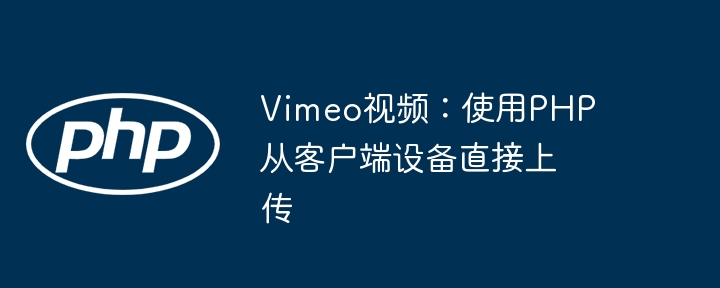
Vimeo video: Use PHP to upload directly from client device
Article Introduction:This article describes how to use the PHP SDK to upload videos directly from a client device to a Vimeo account. This focuses on explaining the form-based upload method, and provides sample code for using the PHP library to initiate requests and obtain uploaded forms. Through this article, developers can learn how to build a web application that allows users to upload videos directly from their browser to Vimeo.
2025-08-12
comment 0
294
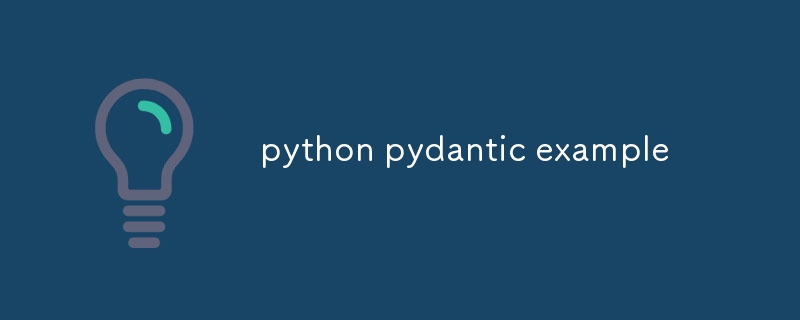
python pydantic example
Article Introduction:Pydantic is a type annotation-based Python library for data verification and model definition. 1. The model can be defined by inheriting BaseModel, and the fields support type checking and default values; 2. Automatically verify the data type, and throw a ValidationError when errors are encountered; 3. Use the @validator decorator to implement custom verification logic, such as range checking and format verification; 4. Support parsing data from dictionaries and JSON strings, and use parse_obj or parse_raw methods; 5. Can nest models to process complex structures, such as objects in the list; 6. It is recommended to use model_dump() and model_dump_json() to output data, and support
2025-08-01
comment 0
441
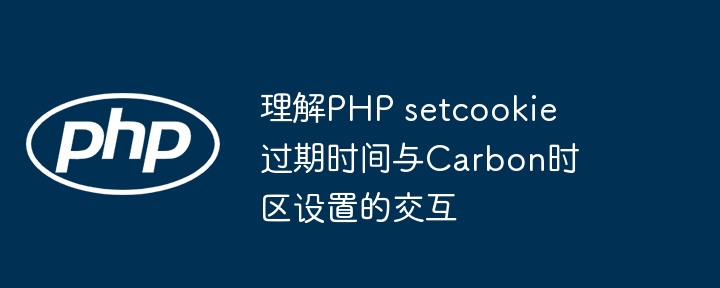
Understand the interaction between PHP setcookie expiration time and Carbon time zone settings
Article Introduction:This article explores in-depth why the browser displays UTC time even if a specific time zone is specified when setting the PHP setcookie expiration time using the Carbon library. The core is that the essence of Unix timestamps is a time zone-free UTC value, and the internal processing mechanism of PHP setcookie is also based on this, so Carbon's setTimezone operation will not change the underlying UTC meaning of the timestamp.
2025-08-29
comment 0
483

Go QUIC Protocol Implementation
Article Introduction:The QUIC protocol is implemented in Go through quic-go, and is suitable for low-latency and high-performance network services. 1.QUIC is based on UDP and comes with TLS1.3 encryption, supporting multiplexing and 0-RTT connections; 2. To build a server using the quic-go library, you need to configure the certificate and private key, and start it through http3.ListenAndServeQUIC; 3. Client connection needs to use http3.Client, default verification of the certificate, and custom RoundTripper control requests; 4. Performance tuning requires attention to handshake delay, packet loss processing and log level settings. It is recommended to enable debug log assisted troubleshooting. Mastering these key points will help build a stable and efficient QUIC service.
2025-07-20
comment 0
354



